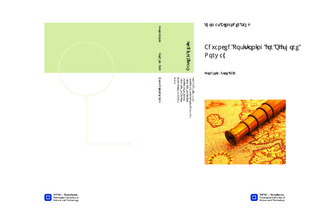| dc.description.abstract | Most of the computation involved in the planning of a new well is done by software. Software such as Landmark, Drilling Office X, etc. These softwares handle everything from the well placement to analysis of hydraulics, torque, and so forth for every drilled section of the well. The problem, however, is that they are closed systems with no insight to the procedure of the computation. And they are expensive, very expensive. This Thesis aims to build the foundation required for the position part of a drilling software. This is accomplished by explaining in detail the field of geodesy and map projections and the associated formulae, with special considerations for the area offshore Norway. Once the guidelines for transformation and conversion have been established, the formulae are implemented in MATLAB. All implemented functions are then verified, for every conceivable method of operation. After which both the limitation and accuracy of the various functions are discussed. More specifically, the iterative step required for the computation of geographic coordinates, the difference between the North Sea Formulae and the Bursa-Wolf transformation, and the accuracy of Thomas-UTM series for UTM projections. The conclusion is that the recommended guidelines have been established and implemented. The implementation was verified, and the proper handling of information is suggested. It also concludes that all functions are more than accurate enough for drilling purposes, and that there is a clear difference between using the Bursa-Wolf transformation and the North Sea Formulae. The difference is discussed in detail, and a intersecting area near the 62$^{\circ}$N is found with 4 meters or less deviation. There are multiple areas on which to continue the work carried out on this Thesis. Within the field of Geodesy, it is suggested that work is done to map the transformations used worldwide, and implement these with the appropriate selection criteria for automation. Attempting to find a joint transformation for the North Sea and the Norwegian Sea would also be recommended. This transformation should replace both the North Sea Formulae and the Bursa-Wolf transformation. Within the field of Map Projection, it is suggested that the conversion of coordinates is expanded to include the MGRS system, the UK grid system, and implementation of the Kr{\"{u}}ger-n series of 8$^{th}$ order for UTM coordinates. Lastly, it is suggested that a graphical interface is developed for both current and future models. This interface should serve as a prototype for a final drilling software. | nb_NO |

